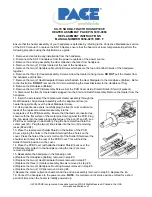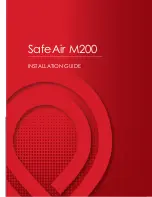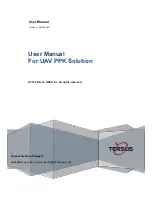
2.3 SAFETY TRAINING
1.
Safety is a primary concern in the design and
manufacture of our products. Unfortunately,
our efforts to provide safe equipment can be
wiped out by a single careless act of an
operator or bystander.
2.
In addition to the design and configuration of
equipment, hazard control and accident
prevention are dependent upon the aware-
ness, concern, prudence and proper training
of personnel involved in the operation, trans-
port, maintenance and storage of this equip-
ment.
3.
It has been said, "The best
safety feature is an in-
formed, careful operator."
We ask you to be that kind
of an operator. It is the
operator's responsibility to read and under-
stand ALL Safety and Operating instructions
in the manual and to follow these. Accidents
can be avoided.
4.
Working with unfamiliar equipment can lead to
careless injuries. Read this manual, and the
manual for your tractor, before assembly or
operating, to acquaint yourself with the
machines. If this machine is used by any
person other than yourself, or is loaned or
rented, it is the machine owner's responsibility
to make certain that the operator, prior to
operating:
a. Reads and understands the operator's
manuals.
b. Is instructed in safe and proper use.
5.
Know your controls and how to stop tractor,
engine, and machine quickly in an emer-
gency. Read this manual and the one pro-
vided with your tractor.
6.
Train all new personnel and review instruc-
tions frequently with existing workers. Be
certain only a properly trained and physically
able person will operate the machinery. A
person who has not read and understood all
operating and safety instructions is not quali-
fied to operate the machine. An untrained
operator exposes himself and bystanders to
possible serious injury or death. If the elderly
are assisting with farm work, their physical
limitations need to be recognized and accom-
modated.
2.4 SAFETY SIGNS
1.
Keep safety signs clean and legible at all
times.
2.
Replace safety signs that are missing or have
become illegible.
3.
Replaced parts that displayed a safety sign
should also display the current sign.
4.
Safety signs are available from your author-
ized Distributor or Dealer Parts Department or
the factory.
How to Install Safety Signs:
•
Be sure that the installation area is clean and
dry.
•
Be sure temperature is above 50°F (10°C).
•
Determine exact position before you remove
the backing paper. (See Section 3).
•
Remove the smallest portion of the split
backing paper.
•
Align the sign over the specified area and
carefully press the small portion with the
exposed sticky backing in place.
•
Slowly peel back the remaining paper and
carefully smooth the remaining portion of the
sign in place.
•
Small air pockets can be pierced with a pin
and smoothed out using the piece of sign
backing paper.
5










































